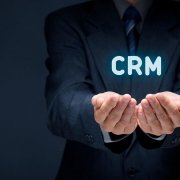Keys to Successful CRM adoption
The Lowdown
CRM adoption is a daunting task. A study shows that 63% of all CRM projects fail – that’s almost 2 times out of every 3; which is a pretty big number. So off the bat, adopters have a lot going against them.
As with anything new, it takes a while to get used to something. Succeeding will require more than just having lady luck at your side, so we have compiled some interesting statistics that you could integrate in to your current plan or just get some tips to use as a spring board for your adoption strategy.
The Struggle is Real
Hubspot puts manual data entry as the No. 1 reason why companies struggle with CRM adoption. Let’s face it, data entry is not something sales people look forward to. Between interacting with customers and typing from of a keyboard, reps would choose to do fieldwork in a heartbeat. Reducing or eliminating this task altogether would almost certainly boost the success rate for CRM adoption everywhere.
Here are 5 common struggles that sales people encounter
1. Change

Statistics show that 32% of sales people spend an hour a day typing away on their computers doing data entry tasks. Drive this point home. CRM systems can save them all that valuable time. Now isn’t that a change that they might be interested in?
2. Intimidation
Sometimes, we may be open to change but feel that it’s too much or too soon. CRM systems can be a frightening proposition for the uninitiated. These systems can be pretty intimidating for first time adopters whose organizational arsenal is a spreadsheet, some sticky-notes and the back of a napkin. Statistics show that 1 out of 5 reps don’t even know what a CRM is. Ween out those bad habits by demonstrating what the system can do for them.
Get them cozy with it by providing adequate training. Don’t overfeed them once and leave them to figure it out for themselves. Turn this into an ongoing process. Finally, don’t forget to make these sessions fun and interesting.
3. This system in not right for me
The usual complaint you hear from your sales people is that, the system is clunky, difficult, confusing or generally not worth the time to use. This can be a deal breaker because you WANT them to use it.
There are a ton of options out there, so be sure to configure a system that’s just right for your team. Make it easy to use. Don’t go crazy and put everything in it. It’s nice to have all the bells and whistles but not to the point that it becomes a distraction and hinders adoption to your system. Ask for their input on the features they’d want. This will save you valuable time and money.
If you feel apprehensive, why not test drive a free CRM solution? There are numerous options available and some of them are actually not half-bad. Hubspot trumpets its product as “The Free CRM with Something for Everyone”. It’s got features that are useful for a variety of roles; from managers, to sales reps and even business owners. And if the time comes that you feel the need for additional features, you can add modules and customize your system. It’s a great way to get your feet wet before you make that final leap.
4. Meant to be
Ask any sales rep if they enjoy data entry – and then get ready for an earful. 32% of agents exhaust up to an hour typing-in data. This pulls them away from what they were meant to be doing – sales. The bottom line is data entry depletes the valuable resource of time. It strips away around 5 hours a week on average which could be utilized for client meetings and follow-ups.
Try to look into data entry automation solutions. Take back those lost hours by eliminating manual data entry. This also creates a more agent-friendly system to use and your data will always be kept current.
5. Say What?
What you are about to read is a bit disturbing. According to Hubspot, 22% of salespeople have no idea what a CRM is. With over 90% of companies having implemented a system, that’s 1 in every 5 not utilizing the investment and driving down overall efficiency.
If you are planning to invest in a system or if you already are, it is important to spread the word to your team. Do not assume that they already know. Include an information drive and proper training in your deployment plan.
Maximize. Maximize. Maximize.
Did you know that only 45% of CRM adopters use their systems for its intended purpose? Hubspot states that less than half of the companies that have a system use it for managing and data storage. The other 40% still rely on emails and spreadsheets while the rest still use – gasp! – traditional methods like pen and paper.
With almost all business moving to adopt a CRM, it’s surprising to see that the majority don’t maximize its potential. You can address this issue by implementing ongoing training and monitoring agent usage.
Conclusion
There are many hindrances to a successful CRM adoption. Knowing the issues and planning around it will give you a better chance for effective implementation. A reliable Voice-to-CRM service is a relative low-cost investment that provides solutions for most of the problems that may spell the difference between successful integration and wasted resources.






